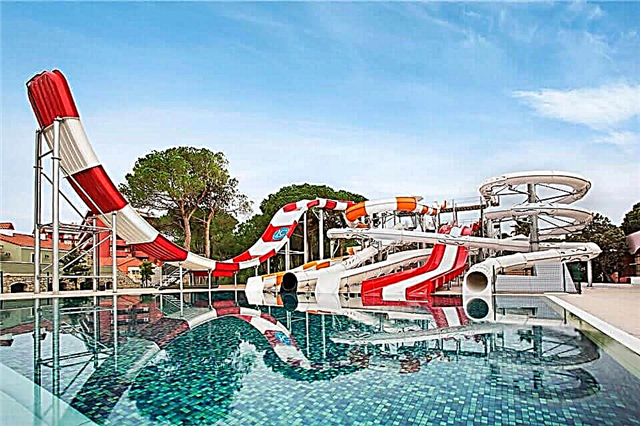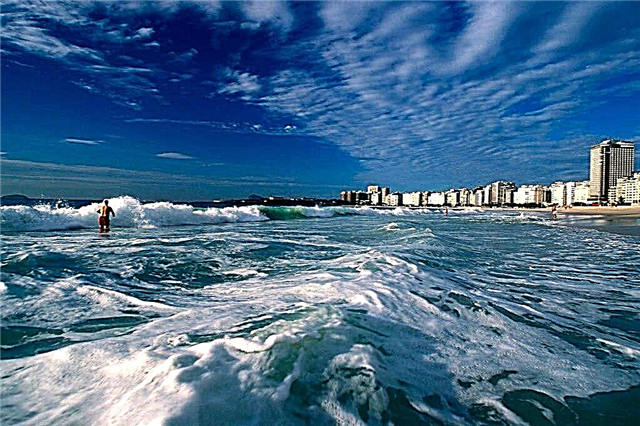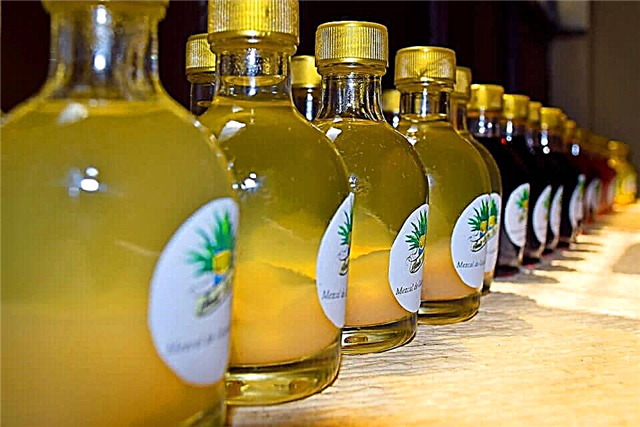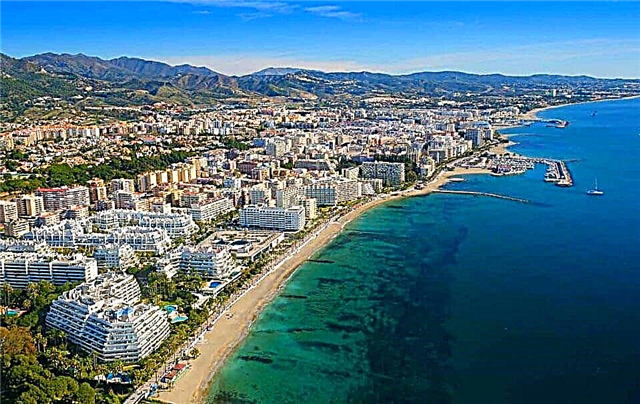Beautiful Andalusia invariably attracts tourists. The mild climate, warm sea and beaches stretching for many kilometers attract those who want to sunbathe and swim during the warm season. But it's worth coming here at any time of the year. The cities of Andalusia - big and small - are full of attractions. Few places on our planet can boast such a rich history. Remains of the first settlements, ruins of the times of Ancient Rome, ancient towers and fortresses, majestic mosques and temples - you will see all this with your own eyes. And there is also a developed service, a lot of entertainment and very tasty cuisine. So let's go to Andalusia!
Granada

It is located in the south of the country and is one of the oldest cities in the country, before it was the capital of the Mauritanian kingdom. Locals call Granada “the soul of Andalusia”. More than 230 thousand people live here now. You can come here all year round, but the best time to visit is spring and autumn: warm, but not hot. The Phoenicians used to live on these lands, then the ancient Romans, after the Moors.
When the Christians defeated the latter, the architectural appearance of the city changed somewhat, the mosques were rebuilt into churches. People come here to try delicious local cuisine, go shopping, but first of all, of course, to see the sights. The most famous of these is the Alhambra. This is a whole medieval complex, which is located on the top of a hill. Examining the former Moorish fortress, you can admire the architecture, take a walk in the majestic gardens, and photograph the fountains. And, of course, a breathtaking view of the city opens up from here.
The oldest building in the complex is the Alcazaba. From this fortress, only the towers and separate fragments remained. Tourists are greatly impressed by the Nasrid palaces with stunning carvings, fabulous ceramic tiles, and complex decoration elements. Also, being in Granada, it is worth visiting the palace of Charles the Fifth, the former country residence of the Generalife emirs, the historic Arab quarter, old churches.
Seville

How can you come to Andalusia and not visit its capital? Seville is one of the most picturesque Spanish cities. He deserves to see him. European culture is mixed with the Eastern here. You will be enchanted by old pavements, horse carriages, Gothic churches and Moorish buildings.
In total, more than 700 thousand live in the city. The history of Seville is traditional for Andalusia - at first the Phoenicians lived here, then the Romans founded their city, they were supplanted by the Moors.
Eventually, Seville became one of the important cultural centers of Europe. As a souvenir, it is worth buying ceramics here - it literally glorified the city. Explore the 15th-16th-century cathedral, which is only slightly smaller than St. Peter's in the Vatican. It is believed that this is where Columbus's body was buried. The bell tower of the cathedral - Giralda - deserves special attention. Scientists believe that this is the oldest building in the city, once a minaret.
The Alcazar - the royal palace - is a real symbol of Andalusia, an example of the Mudejar style. There was an Arab fortress, which was rebuilt into a palace in the 13-14 centuries. The old church of St. Salvador is very beautiful; the "Golden Tower" of Torre del Oro now houses an interesting maritime museum. Be sure to visit Plaza de España with its stunning fountain, canal and Renaissance building.
Cordova

An ancient city that still retains a Moorish atmosphere. You can walk with pleasure along its streets for a long time, admire the flowers (elegant pots are fixed right on the white walls), inspect ancient buildings. This city was founded by the Romans. When the Arabs came to the Iberian Peninsula in the 8th century, Cordoba began to play the role of the capital of the Caliphate. In the 10th century it was one of the largest cities in Europe, a center of science and culture.
In the 13th century, the city became part of the Kingdom of Castile. The most convenient way to get here is by train or bus. It is better to spend a few days exploring the unique sights. Mesquita is a true masterpiece of architecture. The construction of this mosque began in the 8th century, and in the 16th it was rebuilt into a Christian cathedral. Here you will see many original elements that you will not find anywhere else in the world.
The "forest of columns" makes a great impression, there are more than 800 of them. The symbol of the city is the Roman bridge of 16 arches, built after Julius Caesar defeated Pompey the Great. The old Jewish quarter of Giuderia is unusually picturesque; there is a synagogue from the 15th century. Admire the Andzalusian-style architecture of the Palais de Viana, visit the Alcazar de los Reyes castle where Christian monarchs lived, and stand by San Lorenzo, one of the most beautiful Spanish churches.
Rhonda

A small but very unusual city located in the province of Malaga. Ronda stands on a cliff above El Tajo Gorge. There are winding streets, whitewashed houses, many ancient buildings and related legends. Of particular interest for tourists is, of course, the historical part of the city. A little more than 34 thousand people live in Ronda.
For the first time, people settled here in the 6th century BC. and the city itself was founded by the Romans - during the Second Punic War, it was a fortified point. Ronda remained one of the last cities to be occupied by the Spaniards, displacing the Moors from the Iberian Peninsula. Bullfighting is also very popular here, and tourists can see here one of the oldest arenas in the country, which was built in the last quarter of the 18th century. Noteworthy is the Puente Nuevo or New Bridge, which connects the area of the old town and Mercadillo.
It was built at the end of the 18th century. La Ciudad is a revived Moorish era with very interesting houses, squares, streets. See also the Church of Santa Maria la Mayor, which combines features of Moorish architecture and Gothic style. And there is also a bandit museum in Ronda. And finally, the famous Plaza de Toros, a monumental building, the oldest bullfighting arena awaits you.
Cadiz

Recognized as the most ancient city in Western Europe. From here Christopher Columbus set off on his legendary voyage. A real Mediterranean atmosphere reigns in Cadiz, there are a lot of attractions, beautiful beaches, and well-developed service. The Phoenicians founded this settlement more than 3 thousand years ago, but it is still one of the most important ports for Spain. You can come here not only for excursions, but also for a beach holiday. Visit the bay of La Caleta: Phoenician, Carthaginian, Roman ships anchored here in different centuries.
The embankment of Alameda de Apodaca is very beautiful; in the evening there are always a lot of people here. The cathedral in Cadiz was built in the Baroque style, its huge dome is the symbol of the city. The interior of the church is also noteworthy. The ruins of a Roman theater built in the 1st century BC have been preserved in the city. Tourists also visit the palace of the 17th century Casa del Almirante, the watchtower of Tahira of the 18th century. In February-March, a major carnival takes place in Cadiz.
Marbella

Many people choose this city for recreation. The fashionable resort attracts many kilometers of beaches marked with the Blue Flag, nightclubs, luxury hotels, restaurants, golf courses, and luxury boutiques.
But Marbella has a rich historical past, there is something to see. Once there was a Roman settlement. Then the Muslims built their fortress here. When the city became part of the Kingdom of Castile, sugarcane was grown in the vicinity. And in the 19th and 20th centuries, cast iron was cast here.

Marbella acquired its tourist significance in the second half of the 20th century. You can walk for hours along the streets of the city, admire its ancient squares, orange trees, characteristic whitewashed houses. The center of Marbella is Los Naranjos Square. It will be nice to sit here in one of the many restaurants under the crowns of orange trees. There is also the town hall, which dates back to the 16th century. You can also see the oldest church in the city, Hermita de Santiago.
The sculpture of the Apostle James is also noteworthy. The colorful square of Plaza de Altamirano. It is paved with cobblestones, illuminated by retro lanterns, and old buildings are all around. The Church of Encarnacion is of great importance to Marbella. Built in the 16th century, it is distinguished by its elegance and fine decoration.
Sherry

Already the name of this city brings to mind a drink loved by many. Once here, you should go on a guided tour that includes a tasting of Spanish wines, including, of course, sherry. The city is quite large, more than 200 thousand people live in it, and one of the main directions of development of Jerez is tourism. The famous wine has been produced here for centuries, and today several dozen of its types are known. What must-see attractions in Jerez?
First of all, it is the cathedral, a huge temple that stands where the mosque used to be. The magnificent Baroque decoration and numerous sculptures invariably delight tourists. The Royal School of Equestrian Art is the place to see the world's best Andalusian horses and watch their performances. It is very interesting to see even a training session.
The horses not only perform various tricks, but also "dance". Feria del Caballo is a horse show that takes place in a city park. If you have children with you, be sure to go with them. You can watch the races, ride in a carriage and just chat with noble animals. The festival takes place in September and it is truly a colorful sight. You will see Spaniards in national costumes, hear their songs, even bikers take part in the holiday.
Almeria

A large city with a seaport, significant for Spain. But Almeria is both a resort and a cultural center, where a huge number of attractions await you. The name of the city is Arabic, and it means “mirror of the sea”. When the Spanish conquered the lands in the Iberian Peninsula from the Moors, the architecture of Almeria began to change. But the earthquake that happened in the 16th century almost completely destroyed the city, killing hundreds of people.
In the subsequent development of Almeria, raids of pirates interfered. The development of the city began only in the 19th century. Now it is very popular, especially during the warm season. There are many beaches in the area, their total length is 30 km, you can sunbathe and swim from May to mid-October. There is always a lot of public in Las Ramblas - the best cafes and shops are located here. It is worth trying local dishes with seafood, meat with garlic, spicy soups.
The most famous landmark is the Alcazaba. This is a Muslim fortress, built in the distant 10th century. The ruins of another fortress, Castillo de San Cristobal, have been preserved. You can see the towers, as well as admire the marble statue of Jesus Christ. The pride of Almeria is the 16th century cathedral built after the earthquake. Here people not only prayed, but also hid during pirate attacks.
Huelva

A very unusual city that might interest you. In addition, there are not many tourists here. The originality of the local architecture is due to the history of Huelva. Once upon a time, the British were engaged in the mining industry and built up a Victorian-style town. The streets are narrow, there are many monuments, squares, several cinemas. The cuisine here is extremely tasty. That there are only beans with mint and lemon and garlic seasoning. Still, the main dishes of the local table are seafood.

Where should you go? In the main square, Plaza de las Monjas. Not far from the city, there is an old church where the Spaniards once prayed for a successful voyage of Columbus. The Cathedral of Merced is beautifully decorated, it is worth looking at other city churches. The local parks are very good. Walking along their paths, you will admire the views of the city and the Odiel River.
Jaén

The city is considered one of the main world leaders in the production of olive oil, so don't leave here without such a "souvenir" - a bottle of local oil. The wonderful climate, fertile lands have done their job: people have settled in these places since time immemorial - rock paintings have survived. Later, the Carthaginians, the Romans, and the Arabs lived here.
The city was the capital of the Muslim kingdom. There are many monuments of Arab culture. Yet the main local attraction is the Renaissance cathedral. A shrine is kept here - a plate, on which the features of Jesus Christ are imprinted. According to legend, Saint Veronica extended this dress to the Savior when He was led to Golgotha to be crucified. Also interesting is the monument to the Magdalena lizard - a local monster who, according to legend, lived in these places in the 17th century.
Malaga

It is one of the oldest cities in the country. Malaga was founded in the 8th century BC and the local seaport has always played an important role. By the way, it was in Malaga that Pablo Picasso was born. There are beautiful long beaches, warm sea. Therefore, many tourists choose the city as their destination. Throughout its existence, Malaga has changed hands more than once. It was owned by the Phoenicians and Romans, Visigoths and Byzantines, Arabs and Spaniards. It was the capital of the Muslim kingdom, and in the 19th century it became a major industrial center of Spain.
The tourist business began to develop here in the second half of the 20th century. Now there are many shops, fashion boutiques, markets with goods that are attractive to city visitors. The local cuisine is typical of the Mediterranean - sardines, clams in wine, fruits and vegetables, olive oil and sweet wines. It is worth looking at the cathedral, built in the 16-17 centuries, walking along the medieval streets, appreciating the ancient Moorish fortress of the 11th century - now there are museums. Another curious curiosity is the Roman theater, built in the 1st century. And, of course, you must definitely visit the Pablo Picasso Museum, which is located in the house where the great artist was born.
Baeza

If possible, you need to come to this city for at least half a day. Here is the magnificent architecture of the Renaissance period. A real open-air museum. The knights of Castile lived here for many years; beautiful mansions have survived from those times. Most of the architectural landmarks date back to the 16th century. The Lion Fountain can be seen in Plasa del Populo. Four beasts surround a beautiful woman.
It is believed that the sculpture depicts the wife of the great commander Hannibal. There is also a magnificent palace of the 16th century. And on the eastern side of the square, in the building of a former slaughterhouse, the city archive is located. The Cathedral, dedicated to the Virgin Mary, is a prime example of the Renaissance style. The grill of the altar deserves special attention. The fountain in front of the cathedral is unusual - the architect gave it the shape of a triumphal arch.
One of the most beautiful buildings in the city, Halbakinto Palace stands near the cathedral. The building is a combination of Gothic and Renaissance. The Romanesque style can be seen in the architecture of the Church of Santa Cruz. This is one of the oldest churches in Baeza. It was built in the 13th century. Also in the city is one of the first universities in the country - it was opened in the middle of the 16th century. Pay attention to the Aliatares tower, which was built by the Moors in the 10th century.
Grazalema

Tourists are invariably fascinated by the colors of Spain - azure sky, blue sea, mountains covered with greenery, as well as villages and towns where houses are painted white. Do you want to admire such a "white village"? Welcome to Grazalema. The houses here are close to each other, the streets are narrow, as in the Middle Ages. Only about 2 thousand people live here, but tourists invariably love to come here. Where should you go? Visit the Museum of Textile Art.
It was created at a factory that is several centuries old. It was thanks to her that Grazalema once flourished. You should definitely admire the ancient churches - there are three of them here. Attention is drawn to both the architecture and the wonderful collection of sculptures that can be seen here. The fame of this place is also the cuisine.
Cafes, bars and restaurants serve meat and seafood dishes, as well as excellent local cheeses and wines. If you are going to Grazalema, inquire in advance about the expected weather. It often rains here, which is not typical for Spain. But the lands here are unusually fertile and always give a rich harvest. If you want to stay here, there are hotels in Grazalema, although there are not many of them. Still, tourists can opt for a more luxurious or more modest option.
Tariff

The southernmost point of Europe, where the Mediterranean Sea and the Atlantic Ocean meet. There are many not only tourists, but also surfers. If you come here, you can catch the championship. The city arose in the era of Antiquity, since the 13th century it belongs to the Castilians, in the 19th century there was a war between the Spaniards and the French on these lands. You can come here by minibus. There are frequent winds in Tarifa, but they are warm most of the year. But the water is cooler than in other Spanish resorts. The beaches are large, their total length reaches 15 km.
Explore the fortress from the Middle Ages
From here you can see the mountains of Africa in the distance. There are ancient gates in Tarifa and churches that have replaced mosques. One of them is dedicated to the Virgin Mary, the other to the Apostle Matthew. The ruins of a Roman settlement have been preserved not far from the city. From Tarifa it is worth taking a ferry to the African city of Tangier. They also offer boat trips, during which you can see whales. This city was highly appreciated by Paolo Coelho, it has typical Andalusian landscapes.
Benalmadena

A small beautiful resort town that lies on the hills. The tourist infrastructure is well developed here. Lots of attractions and lots of entertainment. Both families with children and young people can come here. And also this city will appeal to everyone who loves to ride on yachts. Observation towers are recognized as the most ancient buildings on the territory of Benalmadena: it was from them that pirate ships and enemy ships could be spotted in time.

"The most ancient" - this is not counting the monuments of the Paleolithic era, and the remains of Roman settlements. The Church of Santo Domingo, built in the 17th century, is interesting. The local archaeological museum and the fairly modern castle of Colomares are worth visiting. It was built in honor of the great Columbus. And the symbol of the city is the sculpture "Girl from Benalmadena", it can be seen in the central square of the city.
In local cafes, ask for charcoal fish and gazpacho soup - eaten cold. Local wines are also good. While walking around the city, you will certainly admire the Moorish-style Biel-Biel Palace, or perhaps visit one of the cultural events that often take place here. Children will love the famous amusement park.
Arcos de la Frontera

You can get here from Cadiz and Jerez by bus - the distances are small. Another "white town" on the map of Andalusia. It is very fond of photographers and artists - the views here are simply fantastic. If you come here with the same purpose - to take pictures or paint - it is better to rent a car. So you can get to those points from which a magnificent panorama opens. According to legend, once this settlement was founded by a descendant of Noah himself. His name was Arkos.
People here were engaged in agriculture, growing grapes, making wine. The Moors appreciated the location of Arkos and erected a fortress on the rock. From a distance it was clear whether the enemy was approaching. Since the capital of the Arab principality was located here, many sights have survived. What is worth seeing in Arcos? Puerta de Matrera Tower - it was built in the 17th century. The Cathedral of Santa Maria de la Asuncion is also very good. The Old Town Hall building is located on the Cabildo Square. And, of course, you need to get to the 11th century Muslim castle. Several centuries later, Napoleon's soldiers were housed here. Now it is private property.
Osuna

One of the most ancient and interesting cities in Andalusia. It is already 3 thousand years old. Once it was a small settlement surrounded by dense forests. Iberians lived here. The Romans named the city Urso because there were many bears in the forests here. Emperor Augustus granted the city a coat of arms, which depicts Ceres - the goddess of fertility - and bears ("ursus" - a bear in Latin). Very interesting cultural monuments have survived from that period.
Huge quarries that are difficult to see at a glance. Roman necropolis, for which natural caves were used (and the first burials here date back to the 3rd century BC). The tombs are divided into chambers. Pictures of birds can be seen on the walls. Then the city passed to the Muslims, and in the first half of the 13th century it was recaptured from them by the troops of Fernando III. In the 16th century, many churches were built here, and its own university appeared. Now it is a beautiful quiet city, where there is no industry, but there is a rich cultural heritage.
Ubeda

A city that will be especially interesting for all connoisseurs of art. There are about fifty cultural monuments of worldwide importance, many other interesting architectural structures. You can observe different styles: Mudejar - a memory of the "Arab period", the Gothic style and, of course, the Renaissance. Ubeda is a prime example of this style in Europe. The rich heritage of the city is appreciated by UNESCO. Muslim troops took over the settlement at the beginning of the 8th century. The Arabs settled here for several centuries, so many characteristic buildings have survived in Ubeda.
In the 13th century, Christian troops drove out the invaders. Since then, Ubeda has experienced many internecine wars - the city's population has significantly decreased. Therefore, residents of other cities began to move here, while receiving benefits. Ubeda owes a lot to Francisco de los Cobos - being a native of this city, the nobleman received an important post under King Charles V. Thanks to his cares, the economic situation in Ubeda improved, agriculture and manual production developed. Now the city is focused primarily on tourists.
Algeciras

Africa is only 50 km from here. In the city you can see buildings belonging to different cultures - both Spanish and Arab. The fortifications built by the Moors in the Middle Ages are worth seeing. Also noteworthy are the 18th century Church of Our Lady of La Palma and the Chapel of Our Lady of Europe. Another church, Nostra Señora de la Palma, has become a cultural heritage site of the country.
In 1995 the city museum was opened.
Here you can see a rich collection of archaeological finds, examples of religious art. Tourists come here willingly to look at stone axes, amphorae, found tombstones, marble sarcophagi. A collection of ceramics is also presented - it belongs to the Islamic culture. There is also a good water park in the city, and there is a national park and a nature reserve nearby.
Sanlucar de Barrameda

The small town stands on the shores of the Atlantic Ocean. Sanlucar de Barrameda has a rich cultural program to offer.These are excursions around the historical part of the city, where many monuments have been preserved. Travel to the national park, with its rich flora and fauna. And just walks along charming streets, leisurely gatherings in a cafe, wine tasting.
They make excellent sherry here. The main local attraction is the Santiago Castle, built in the 15th century. It is built in the Gothic style and is impressive. The local churches in the Renaissance style are also good, they are decorated with graceful sculptures. Also worth a visit is the Bourbon Palace, which dates back to the 19th century and is surrounded by a beautiful English garden. And after an extensive excursion program, it will be pleasant to relax on the local beaches. Andalusia is waiting for you!











